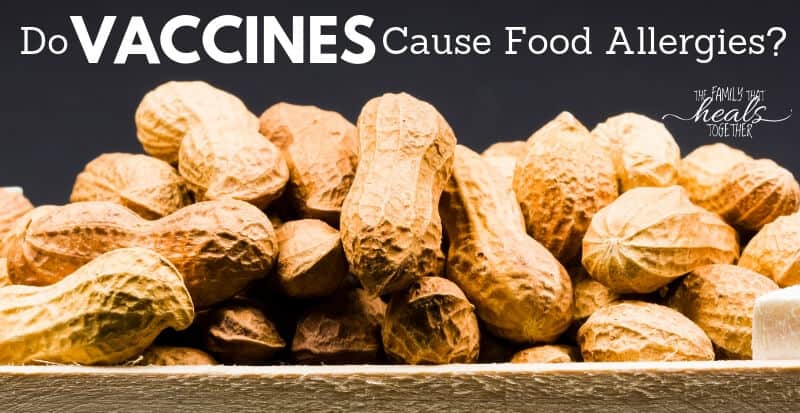Got questions about collagen powder side effects? We’ve got answers. In this article, we’ll explain what collagen powder is good for, who can use it, and what to watch out for if you’re concerned about collagen peptide safety.
What is collagen powder?
You have probably heard of it before. Collagen powder has been a popular health buzzword for a while.
Collagen, a protein that binds tissues, is the most abundant protein in the human body, found primarily in connective tissues such as hair, nails, tendons, and ligaments.
In powdered form, collagen hydrolysate (aka collagen peptides) is a white powder made from the connective tissues of animals. It contains easy-to-digest proteins that can help heal or strengthen human connective tissue.
Collagen hydrolysate and gelatin are closely related and both are beneficial to your health.
Both of them come from collagen-containing tissues and contain the same amino acids, but they are chemically different.
Gelatin comes from cooking connective tissue, which extracts gelatin while leaving the proteins in longer chains. These longer protein pieces mean that gelatin can only dissolve in hot water and will cause liquids to gel once cooled.
Collagen hydrolysate (collagen powder) is a more intensively-processed form of collage which breaks the protein chains up into smaller pieces.
These smaller protein pieces mean that collagen hydrolysate will dissolve in cold liquids and will not cause liquids to gel. It also means that collagen hydrolysate is easier for the body to digest.
What are the side effects of taking collagen?
When it comes to side effects, collagen powder has very little downside. There are few side effects and the FDA has designated it “generally recognized as safe” (GRAS).
A few benefits to consuming collagen peptides include:
- Improving the health of skin, hair, and nails. As the body ages or you deal with chronic health issues, the collagen in connective tissues can decrease, leaving them weaker and less elastic. Supplementing your diet with collagen can help strengthen and improve elasticity.
- Slowing or reducing painful joint issues. The cartilage in your joints, as well as the tendons and ligaments that are responsible for flexion, are also collagen-rich tissues that can stiffen and degrade over time. Supplementing with collagen can help keep your joints healthy and happy.
- Improving gut health. Collagen is essential to a healthy gut lining. When leaky gut is at play, collagen helps to heal and repair the gut wall, thereby helping to reduce inflammation.
- Providing easy-to-use amino acids. The amino acids in collagen offer a variety of benefits to the body, from building muscle mass and increasing energy and metabolism to slowing the effects of aging and speeding healing. Amino acids even improve the health and function of vital organs like the heart and liver.
- Improving the health of your teeth and bones. Collagen can help prevent bone degradation, like what you see with osteoporosis. It also aids in the mineralization and stability of dental tissues.
Is collagen safe to take?
As mentioned above, collagen is GRAS with few known side effects.
The biggest risk is if one is sensitive to the protein of the source animal itself. If you are sensitive to beef, for example, then it would be best to avoid collagen powder sourced from beef. Instead, look for marine collagen powder.
How much collagen should you have a day?
How much collagen you should have per day depends on your goals and health. If you are looking to improve the appearance of your skin and hair, aim for 1-5 grams per day.
If you’re looking to prevent muscle loss with collagen powder, then you would be looking at upwards of 15 grams per day.
Dr. Kellyann Petrucchi, the author of the Bone Broth Diet, recommends collagen powder at:
- 5 grams per day of collagen powder for everyone
- 10-15 grams per day if you deal with chronic inflammation
- Up to 30 grams for athletes and those dealing with digestive dysfunction or joint pain.
Can collagen make you gain weight?
From a caloric perspective, pure collagen supplementation cannot make you gain unwanted weight because there should be nothing in it but collagen, which is a protein and will not lead to an increase in calories consumed.
If anything, collagen has been found to have a suppressant effect on appetite because it keeps you full, longer.
What collagen can do is help increase muscle mass and burn fat. This may contribute to an increase on the scale, but that increase will be in muscle tissue. As muscle mass increases, so too does metabolism which leads to an increase in fat burning.
Collagen powder side effects
As mentioned before, collagen itself has few known side effects. That being said, there are some factors to take into consideration.
Poorly-sourced collagen can contain additives that are unnecessary and potentially detrimental to your health and gut, even going so far as to spur allergic reactions.
The health and lifestyle of the animals used to make the collagen come into play, as well. Cattle raised in feedlot/CAFO operation eat a diet rich in GMO corn and soy (problematic in its own right) and other feedstuff that has been treated with glyphosate.
There is evidence to indicate that due to the molecular similarities between glyphosate (a toxic chemical) and glycine (an amino acid found in collagen), glyphosate can mistakenly be assimilated into collagen in place of glycine, contributing to a whole host of health issues.
You will also want to avoid collagen sourced from farmed fish used to make marine collagen powders for similar reasons.
In other words, quality matters!
Another area of concern is the potential for collagen powder to raise oxalate levels in the body.
Elevated oxalate levels, especially the urine, can raise the risk of developing kidney stones in at-risk individuals (approximately 10% of the population).
To determine if this is you, it may be best to have your urine oxalate levels tested before committing to long-term or high-dose collagen supplementation. Ensuring optimal levels of vitamin B6 works to neutralize the risk of elevating oxalate levels in response to collagen supplementation. Being diligent to stay well-hydrated also reduces the risk of developing kidney stones.
Due to the potential to raise oxalate levels, collagen may also be problematic for those dealing with SIBO and other forms of oxalate sensitivity.
Which collagen is best?
So how do you know what collagen powder to buy?
I recommend Perfect Supplements Hydrolyzed Collagen or Perfect Supplements Gelatin, depending on your needs.
Perfect Supplements goes to great lengths to ensure a safe and high-quality product. Their collagen is sourced from 100% grass-fed cows and is rigorously tested to ensure product purity and that it is free from glyphosate and other contaminants like pesticides and hormones.
Perfect Supplements is also lower-priced than comparable brands, despite being super high quality! The company offers multi-item discounts, plus you can save an extra 10% using the code FAMILYHEALS10.
Can you take collagen in supplement form?
Yes! Perfect Supplements has recently released a Type II Collagen- derived from bovine cartilage, which helps to improve joint health. If taking capsules is your jam, this new supplement is for you.
It has the coveted glyphosate-free label, as well as important co-factors to ensure your body can assimilate these crucial nutrients for join health. Check it out here.
If bovine collagen is not an option for you, Vital Proteins makes a good quality marine collagen supplement from the scales of wild-caught whitefish.
Collagen powder side effects: no risk, all benefit?
For the majority of people, collagen is a safe and low-risk way to increase protein intake and support the health and strength of connective tissue for kids and adults alike.
Here are some delicious recipes to bring more collagen powder into your day:
- Super Antioxidant Blueberry Chia Seed Smoothie
- Homemade Popsicles
- Paleo Fudgesicles
- Rustic Paleo Pizzette
- Gluten-Free Fruit Crisp
- Secret Ingredient Bulletproof Tea
- DIY Hormone Support Supplement
- Paleo Biscuits
- Chocolate Pudding
- Banana Pudding
- Gingerbread Man Immune-Boosting Gummies
- Gut-Healing Gummies
- Bulletproof Chocolate Milk
- Or, simply mix it into your favorite hot or cold beverage














